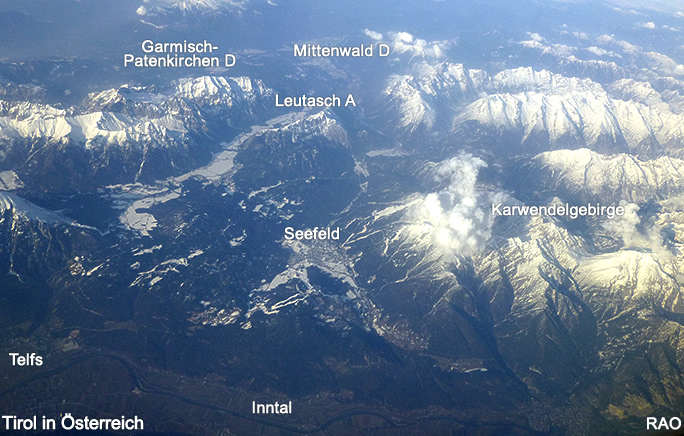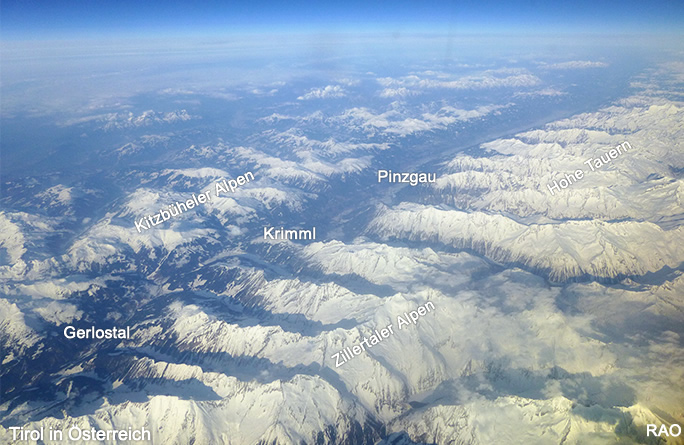 |
Klimawandel Berichte |
 |
Klimawandel Informationen |
|
| Global Warming - Climate Change & Tourism |
November
2003 - UNEP
| Many
Ski Resorts Heading Downhill as a Result of Global Warming |
 |
| Wenn
sich die Schneegrenze in den Alpen merkbar nach oben verschiebt und das
Klima nachgewiesen wärmer wird, ist es für den Tourismus an der
Zeit, innovative Wege und Ideen für eine erfolgreiche Zukunft zu entwickeln.
Einen
ersten Schritt in diese Richtung machten Experten auf dem Stand der Österreich
Werbung (ÖW) in Berlin im Rahmen einer Podiumsdiskussion. |
|
Gemeinsamer
Tenor: Von einem Klimawandel - sowohl das Wetter als auch die Bedürfnisse
der Gäste betreffend - kann Österreichs Tourismus profitieren.
World
Conference on Sport and the Environment in Turin 2 to 3 December 2003
Many
low altitude ski resorts face economic hardship and even ruin as a result
of global warming, a new study launched today by the United Nations Environment
Programme (UNEP) concludes. Experts at the University of Zurich say that
the levels of snow falling in lower lying mountain areas will become increasingly
unpredictable and unreliable over the coming decades.
Currently
an estimated 15 per cent of Switzerland's ski resorts are deemed to have
unreliable levels of snowfall. In the future, between 37 percent and 56
per cent could have such low levels of snow that many, including the Swiss
resorts of Wildhaus and Unterwasser, will be facing acute difficulties
in attracting overseas tourists and local winter sports enthusiasts. "The
impacts of climate change on winter tourism may be even more severe in
countries such as Germany or Austria due to the lower altitudes of their
ski resorts," say the researchers.
The
internationally celebrated winter sports town of Kitzbuehl, popular among
the rich and famous, faces extinction as a top ski resort. Kitzbuehl is
an example of a resort lying at the low altitude of 760 metres, a height
that will make it acutely vulnerable to declining and less frequent snow.
The study says that ski resorts in North America and Australia will be
impacted too. Indeed, none of Australia's ski resorts will be economically
viable by 2070 under a worst case scenario. The findings have come from
Rolf Burki and colleagues at the University of Zurich. They are being presented
today at the V World Conference on Sport and the Environment taking place
in Turin, Italy, which is the host city for the 2006 Winter Games.
The
conference has been organized by the International Olympic Committee in
cooperation with the Organizing Committee for the winter games in Turin
and UNEP. The news also comes as nations meet in nearby Milan for the latest
round of climate change talks known as the 9th Session of the Conference
of the Parties to the United Nations Framework Convention on Climate Change.
Klaus Toepfer, UNEP's Executive Director, said: "Winter sports and tourism
are big business in many of the world's mountain areas. They offer important
sources of revenue and employment for sometimes remote communities as well
as healthy, pleasurable recreation for millions. In many communities, downhill
and cross-country skiing, tobogganing, snow boarding and other winter sports
are also important cultural and family activities." "Climate change in
the form of extreme weather events such as hurricanes, floods and droughts,
is the greatest challenge facing the world. Clearly it is the poorest of
the poor on continents like Africa, Asia and Latin America who are at the
greatest risk, who are the most vulnerable. The United Nations Millennium
Development Goals, covering such issues as water and sanitation, are all
going to be harder to deliver, if global warming is not tackled. But this
study on winter sports shows that it is not just the developing world that
will suffer. Even rich nations are facing potentially massive upheavals
with significant economic, social and cultural implications," he said.
Dr
Burki, who is Lecturer and Senior Research Associate at the University
of Higher Education, St Gallen, as well as Lecturer at the International
School of Tourism Management, Zurich, said: " Climate change will have
the effect of pushing more and more winter sports, higher and higher up
mountains, concentrating impacts in ever decreasing, high altitude, areas.
As ski resorts in lower altitudes face bankruptcy, so the pressure in highly,
environmentally sensitive, upper altitude areas rises along with the pressures
to build new ski lifts and other infrastructure." "The extent to which
countries, regions and communities can adapt will depend on how the costs
and technology of snow making equipment develops, how the economics of
building extra, higher altitude infrastructure such as cable cars develops,
and the location of existing resorts," he added. "However, it appears clear
that many resorts particularly in the traditional, lower altitude resorts
of Europe will be either unable to operate as a result of lack of snow
or will face additional costs, including artificial snow making, that may
render them uneconomic," said Dr Burki, whose research has been carried
out in collaboration with Hans Elsasser, professor for Economic Geography
at the University of Zurich, and Dr Bruno Abegg, a travel journalist.
Indeed,
the team suggests that warmer temperatures will make artificial snow making
increasingly inefficient and expensive, if not impossible. The research
has used temperature forecasts produced by the Intergovernmental Panel
on Climate Change (IPCC), a body of some 2,000 scientists. The IPCC was
established by UNEP and the World Meteorological organisation to model
the impact of rising levels of carbon dioxide and other greenhouse gases
in the atmosphere and to offer advice to governments on how to deal with
the threats.
The
IPCC estimates that temperatures will rise by between 1.4 degrees C and
5.8 degrees C by 2100 unless action is taken to significantly reduce emissions
from sources such as vehicles, industry, offices and homes.
Global
warming is expected to be stronger on land areas in the northern hemisphere
during the winter months, making mountain-based winter tourism acutely
vulnerable.
top
 Austria,
Italy and Germany Austria,
Italy and Germany |
In
Austria, the present snow line is likely to rise 200 to 300 metres higher
over the next 30 to 50 years. "Many mountain villages, above all in the
central and eastern parts of Austria, will lose their winter industry because
of climate change," says the study. In Italy, half of the winter sport
villages are below 1,300 metres. "Some of these are already facing major
problems with snow cover. In future, there will only be a few winters with
a winter atmosphere - that means snow - in these ski resorts," it says.
"If the altitude for snow reliability rises to 1,500 metres because of
climate change, winter sports would only be possible [in Italy] in the
higher zones of the ski areas and many resorts would have no economic viability
in the future," the scientists conclude. Many of Germany's ski resorts
are also at relatively low altitudes. Resorts in the Black Forest area
and in Allgaeu could be severely affected by climate change.
top
 Switzerland Switzerland |
The
study has focused on Switzerland to assess the likely future impacts of
climate change on a typical winter sports country. The researchers considered
a ski resort "snow reliable" if, in seven out of 10 winters, it receives
at least 30 to 50 centimetres of snow on at least 100 days between December
1 and April 15. Currently 85 per cent of Switzerland's 230 ski resorts
are classed as "snow reliable". These are in areas where the snow line
is at 1,200 metres or above. Under one scenario, snow in ski resorts becomes
unreliable at 1,500 metres in 30 to 50 years as a result of global warming.
"The number of snow reliable ski resorts would drop to 63 percent. The
Jura, Eastern and Central Switzerland, Ticino and the Alps in the cantons
of Vaud and Fribourg will be particularly jeopardized by global warming,"
they say. If snow reliability rises to 1,800 metres, under a more acute
warming scenario, only 44 percent of skiing regions would be snow reliable.
Even in the higher altitude cantons of Grisons and Valais, an estimated
25 percent of resorts face threats.
The
precise economic losses facing a country like Switzerland are uncertain.
But some experts have suggested that tourism losses in that country, as
a result of climate change, could eventually be as high as $1.2 to $1.6
billion annually.
top
 Australia
and North America Australia
and North America |
The
report suggests that, for nine Australian ski resorts, a rise of 0.3 degrees
C would, by 2030, only bring into question the viability of the Mount Baw
Baw site. However, if temperatures climb by 0.6 degrees C by the same date,
only five resorts are likely to be unaffected. Under a worst case scenario,
in which temperatures climb by 3.4 degrees C by 2070, none of Australia's
existing ski resorts would be operating at a profit.
In
the Lakelands areas of Canada the current ski season could, if current
snowmaking technology is in use, decline by between seven and 32 per cent
by 2050 as a result of global warming. Resorts may have to make between
48 per cent and 187 percent more artificial snow by the same date. "The
ability of individual ski areas to absorb additional snowmaking costs may
be the crucial factor in remaining economically viable," says the report.
top
 Permafrost
and Glaciers Permafrost
and Glaciers |
The
researchers say that impacts are already being felt in mountain areas.
Glaciers, used for both winter and summer skiing, have been retreating
over the past century and a half. For example Swiss glaciers have lost
more than a quarter of their surface. By 2030, 20 percent to 70 percent
of Swiss glaciers may have disappeared the scientists say.
Rising
temperatures will also have other economic and safety impacts. Permafrost,
essentially frozen soil, is likely to be more vulnerable to melting, increasing
the risks of landslides and raising the costs associated with anchoring
and bracing cable car stations, lift masts and other structures.
The
researchers, who also included precipitation models in their calculations,
suggest that avalanches may become more common above 2,000 metres, which
may increase risks to skiers and other sports people as well as damage
to infrastructure. The researchers argue that, while winter sports tourism
is clearly a potential victim of climate change, it also has a responsibility
towards reducing carbon dioxide and the other emissions linked with global
warming. These can arise from traffic travelling to the resorts and the
energy-intensive equipment used to make artificial snow and ice.
top
5th
World Conference on Sport and Environment, Turin 2-3 December 2003 (IOC/UNEP)
Dr.
Rolf Buerki, Prof. Dr. Hans Elsasser, Dr. Bruno Abegg
University
of Zurich
|
|
|
|






